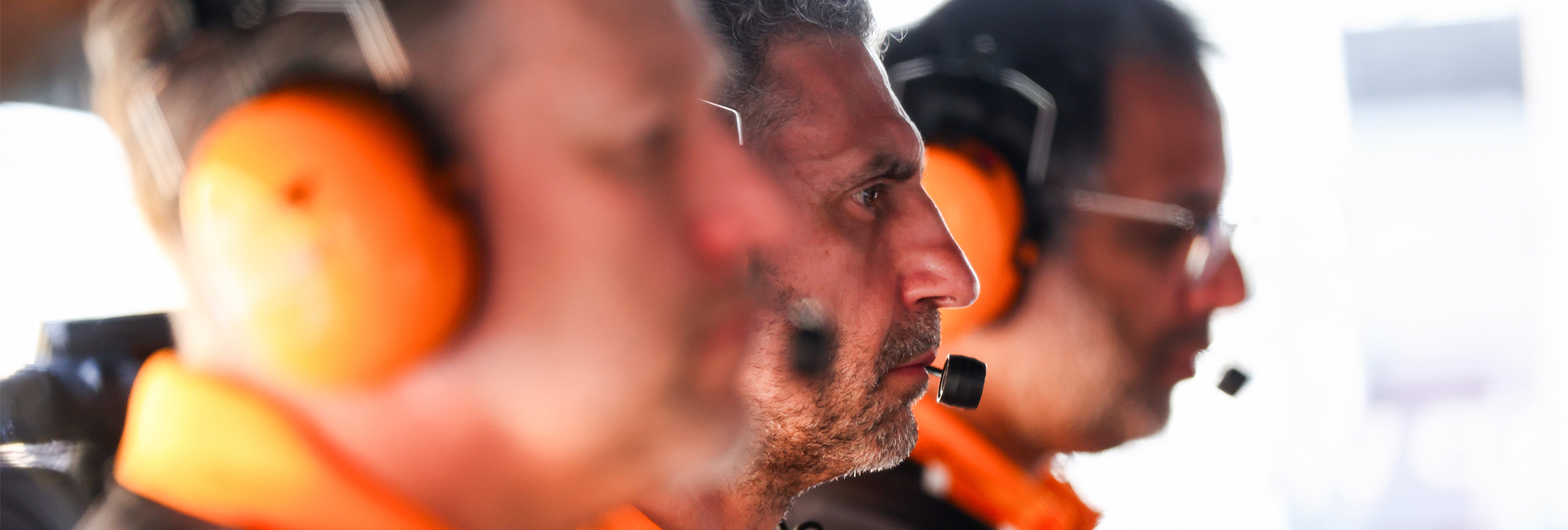A MULTICENTRE trial has found that maternal prebiotic supplementation during pregnancy does not prevent atopic dermatitis (AD) in infants at high risk of allergic disease. The findings challenge previous assumptions that optimising the…
Blog
-

How extreme weather is making plastic pollution more mobile, more persistent and more dangerous
The surging tide of microplastics is already an environmental and health threat, but as the world heats up — driving increasingly extreme weather — it’s transforming them into “more mobile, persistent,…
Continue Reading
-

World Rugby and Emirates announce record-breaking partnership extension
The renewal cements Emirates as a World Rugby Platinum Partner and Principal Partner of the men’s and women’s Rugby World Cups for the next decade, extending a relationship that has been central to the sport’s rise on…
Continue Reading
-
HWS Update FEA–WCSA 2025 | Maersk
We would like to summarize the existing Heavy Load Surcharge from Far East Asia to West Coast South America, Central America and Caribbean.
The current tariff levels are as follows:
*Far East Asia countries include Brunei, China, Hong Kong China, Indonesia, Japan, Cambodia, Mongolia, South Korea, Laos, Myanmar, Malaysia, Philippines, Singapore, Taiwan China, Thailand, and Vietnam
**West Coast South America, Central America and Caribbean countries include Antigua and Barbuda, Anguilla, Netherland Antilles, Aruba, Barbados, Bermuda Island, Bolivia, Bonaire Sint Eustatius and Saba, Bahamas, Belize, Chile, Colombia, Costa Rica, Curacao, Dominica, Dominican Republic, Ecuador, Grenada, French Guiana, Guadeloupe, Guatemala, Guyana, Honduras, Haiti, Jamaica, St Kitts- Nevis, Cayman Islands, St Lucia, Martinique, Montserrat, Mexico, Nicaragua, Panama, Peru, St Pierre and Miquelon, Puerto Rico, Suriname, El Salvador, Sint Maarten, Turks and Caicos, Trinidad and Tobago, Saint Vincent and the Grenadines, Venezuela, Virgin Islands (Br.)The above quantum is the same quantum that we have published previously
Heavy Load Surcharge from Far East Asia to Mexico expired on 19th Sep 2025. And Heavy Load Surcharge from Far East Asia to Eduardo will expire on 2nd Dec 2025 accordingly.
When Verified Gross Mass (VGM) exceeds the weight threshold, Heavy Load Surcharge will be triggered. The Verified Gross Mass (VGM) is the weight of the cargo including dunnage and bracing plus the tare weight of the container carrying this cargo.
Heavy Weight Surcharge will be applicable to all Ocean products including contract products, SPOT, Maersk Go, and others.
- The above rates are also subject to other applicable surcharges, including local charges and contingency charges.
- These rates are unaffected by, and do not affect, any tariff notified, published, or filed in accordance with local regulatory requirements.
- For trades subject to the US Shipping Act or the China Maritime Regulations, quotations or surcharges that vary from the Maersk Line tariff shall not be binding on Maersk Line unless included in a service contract or service contract amendment that has been filed with the Federal Maritime Commission (FMC) or the Shanghai Shipping Exchange, as applicable.
If you have any questions, please feel free to reach out to our local representatives on Maersk.com.
We appreciate your business and look forward to continuing working with you in the future.
Continue Reading
-
U.S.-Russian crew of 3 blasts off to the International Space Station in a Russian Soyuz rocket – The Washington Post
- U.S.-Russian crew of 3 blasts off to the International Space Station in a Russian Soyuz rocket The Washington Post
- NASA Sets Coverage for Crew Launch to Join Station Expedition NASA (.gov)
- Soyuz spacecraft blasts off for International Space…
Continue Reading
-

A&O Shearman advises Weinberg Capital Partners on sale of Sapian group to a continuation fund
This transaction, which mobilizes a total of EUR115 million in equity, marks a new milestone in the partnership initiated in 2019 with the investment of WCP’s leveraged buyout (LBO) WCP#3 fund in Sapian.
The continuation fund, dedicated to Sapian, will support the company’s ambitious growth strategy, particularly through future external growth operations. New investors, including Montana Capital Partners as lead investor, as well as several family offices, are joining the capital alongside existing investors. Weinberg Capital Partners also contributed to financing this transaction, which represents the sixth investment of WCP’s LBO Fund #4.
Jules Lecoeur, partner at A&O Shearman, said: “Continuation funds have become an essential tool for private equity firms and a key driver of secondary transactions. This transaction demonstrates our ability to drive single asset GP-led transactions tailored to the needs of financial investors and management teams.”
Founded in 2019 following the carve-out of the “Hygiene and Prevention” division of the ISS Group, Sapian now employs over 1,500 people across 41 branches in France and anticipates revenue exceeding EUR155m in 2025.
A&O Shearman advised Weinberg Capital Partners on all transactional aspects with a team including partner Jules Lecoeur, associates Alexia Monne, Yasmine Benhmida, Fatima Ahamada and Aresse Chegra on M&A aspects; partner Thomas Roy, senior associate Jonas Brucker, associates Baudouin Harou and Maxime Silly on financing aspects; partner Charles del Valle, senior associate Ageu Pires and associate Ryan Ceglia on tax aspects; as well as partner Olivier Picquerey and associate Marie Chauvat on employment law aspects.
Continue Reading
-

Coxiella Burnetii should not be ignored:Two cases of Q fever pneumon
Introduction
Q fever is a zoonotic disease caused by the bacterium C. burnetii which has worldwide with the exception of New Zealand.1,2 It was first reported by Dr Derrick in 1935 originating from an unexplained collective fever among…
Continue Reading
-

‘Our plan didn’t work’ – Inter boss admits substitutes failed and blames derby fatigue for Atletico Madrid defeat
The defeat fits a worrying pattern. the Nerazzurri’s losses this season have almost all come against top-level opponents: Milan, Napoli and Juventus earlier in the campaign, and now Atletico. Each time, the team have created chances but failed to…
Continue Reading
-

Andrea Stella interview ahead of the 2025 Qatar Grand Prix
Read time: 7.4 minutes
Twenty-two races down, two to go. Ahead of a season-defining Middle Eastern double-header, we sat down with Team Principal Andrea Stella in Qatar, where we discussed the results of the Las Vegas Grand Prix and looked…
Continue Reading
-

Tour O The Borders played ‘vital role’ in bringing visitors
The return of an annual biking event contributed more than £750,000 to the Borders economy, according to an independent assessment.
The Tour O The Borders started in 2014 but was cancelled last year amid concerns about road closures.
It returned…
Continue Reading
